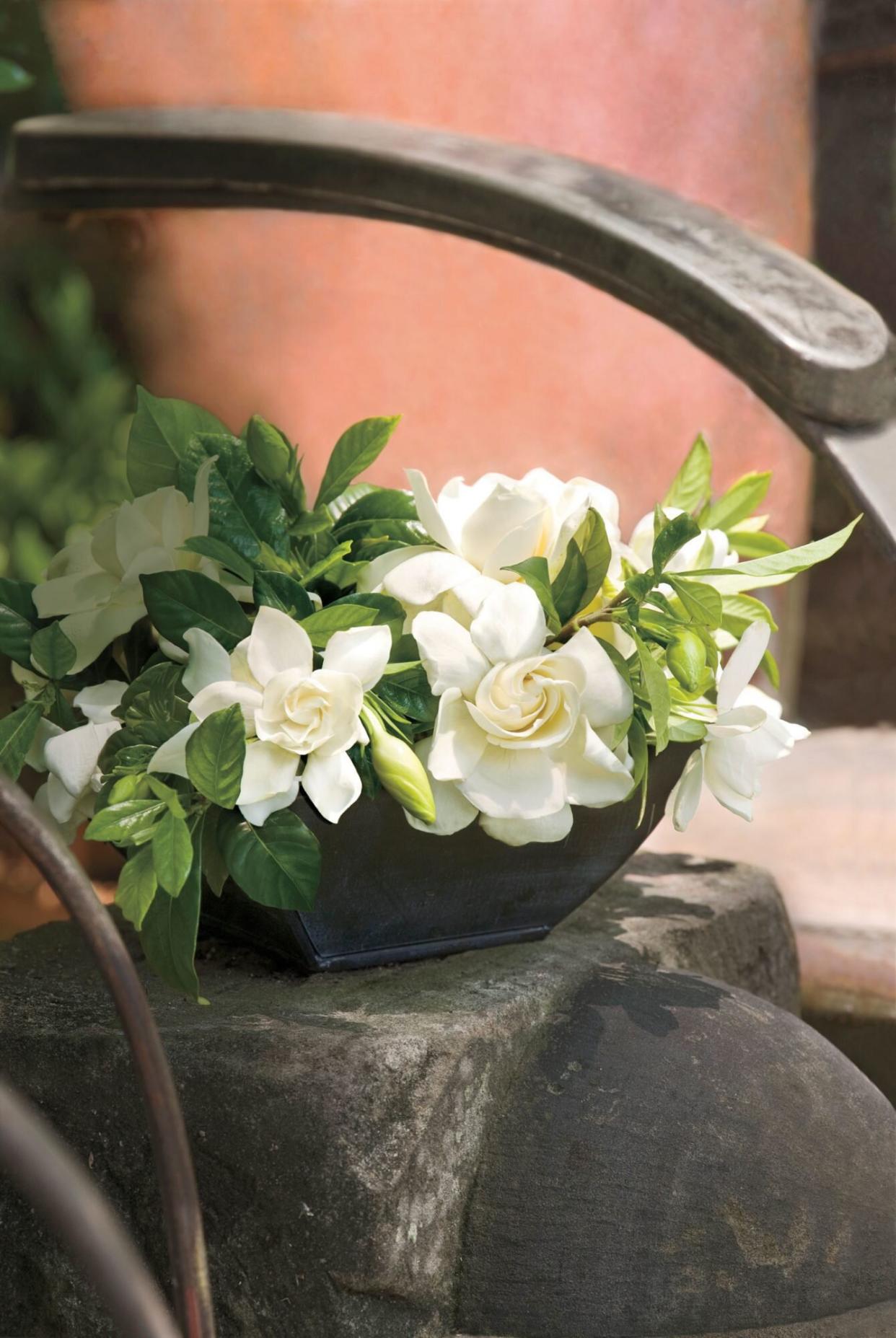Go Ahead, Plant Those Gardenias

TABLE OF CONTENTS
On This Page
Where to Plant
How to Plant
Gardenia Care
Gardenia Facts
When you list plants that belong in a classic Southern garden, the gardenia (Gardenia jasminoides) has to be in the top five. Beautiful evergreen leaves, snow-white blossoms, intoxicating fragrance, and the ability to withstand the Southern summer heat. What more could you ask for? Also known as cape jasmine, gardenias can bloom as early as spring and will continue to produce flowers throughout the summer and into fall. With showy blooms that open white and then fade to gold, gardenias are versatile as single shrubs, hedges, or make beautiful container gardens. Gardenias demand to be treated right, however, so here are a few tips to help keep your Southern beauty happy and healthy.
Where to Plant
Choose your spot wisely. Gardenias can handle full sun, just not all day. They need protection from baking mid-day or afternoon sun. North and east-facing exposures are ideal because the plants will receive bright morning light and some midday light, but won't be in full sun during the hottest part of the day. While gardenias make beautiful additions to borders, they don't like to be crowded by other plants or competing roots. Place them along pathways, at the corners of your house, or near windows where you can appreciate them even from inside your home. Gardenias do well in large pots on decks and patios—which are the perfect spot to place them to take full advantage of their beautiful blooms and fragrance. Let potted plants grow naturally or clip and train them as topiary standards. Unfortunately, they make poor houseplants and attract mites, mealybugs, and whiteflies.
How to Plant
The best times to plant gardenias are fall and spring when temperatures are moderate. Like camellias, gardenias like to be planted a little high. The soil should drain fast but retain water—make sure to condition it with plenty of organic matter such as peat moss or ground bark. Dig a hole that is twice as wide and just as deep as the plant's root ball. Firmly pack three to four inches of soil at the bottom of the hole and set the root ball about one inch higher than the surrounding soil to help ensure adequate drainage. Then, gently taper the soil up to the top of the exposed root ball. Mulch plants with pine straw or chopped leaves. Gardenias do not like to be disturbed once they are established so it's best to hand-pull weeds instead of cultivating around the root zone.
Gardenia Care
Gardenias are easy to grow but require a bit of attention. Fuss over them and the plant gives beauty. Ignore them and they yellow and die. Moist, acidic, well-drained soil; morning sun and afternoon shade; good air circulation; and proper fertilization will make them happy. With lustrous leaves, beautiful flowers, and a heavenly fragrance, gardenias are the perfect plants to grace the days of summer.
Soil
Gardenias prefer soil that is acidic, moist, and well-draining. Adding organic matter to the soil will help your gardenia thrive all season long.
Water
Gardenias should be watered once a week, with about one inch of water. Keep the soil damp, never soggy, but also don't let it get completely dry. Overwatering or underwatering your gardenia could cause the flower buds not to open or even fall off.
Light
Gardenias like a lot of sunshine, but it is important to have them in a place where they are protected from the afternoon sun, especially in the hotter months of summer. Too much sun could result in the leaves becoming scored and the plant dying.
Other Care Methods
Gardenias need high humidity to flourish. Extra moisture can be provided to your gardenia by misting daily, using a humidifier, or placing the plant on a tray of moist pebbles. Providing this humidity will ward off sneaky spider mites who take over gardenias in dry conditions. Gardenias also respond well to fertilizer and should be fertilized with the proper fertilizer every two to four weeks in their growing season which lasts from March to October.
Gardenia Facts
Gardenias are native to the Orient but were named in honor of Scotland-native Dr. Alexander Garden in 1760. Garden was an 18th-century botanist, naturalist, and physician who spent most of his time in South Carolina in his garden, where he conducted many horticulture experiments and had many great discoveries.
'Radicans' gardenia's small leaves and size make it an ideal plant to train as a bonsai.
Jazz singer Billie Holiday considered gardenias to be her signature flower and wore them in her hair whenever she performed.

